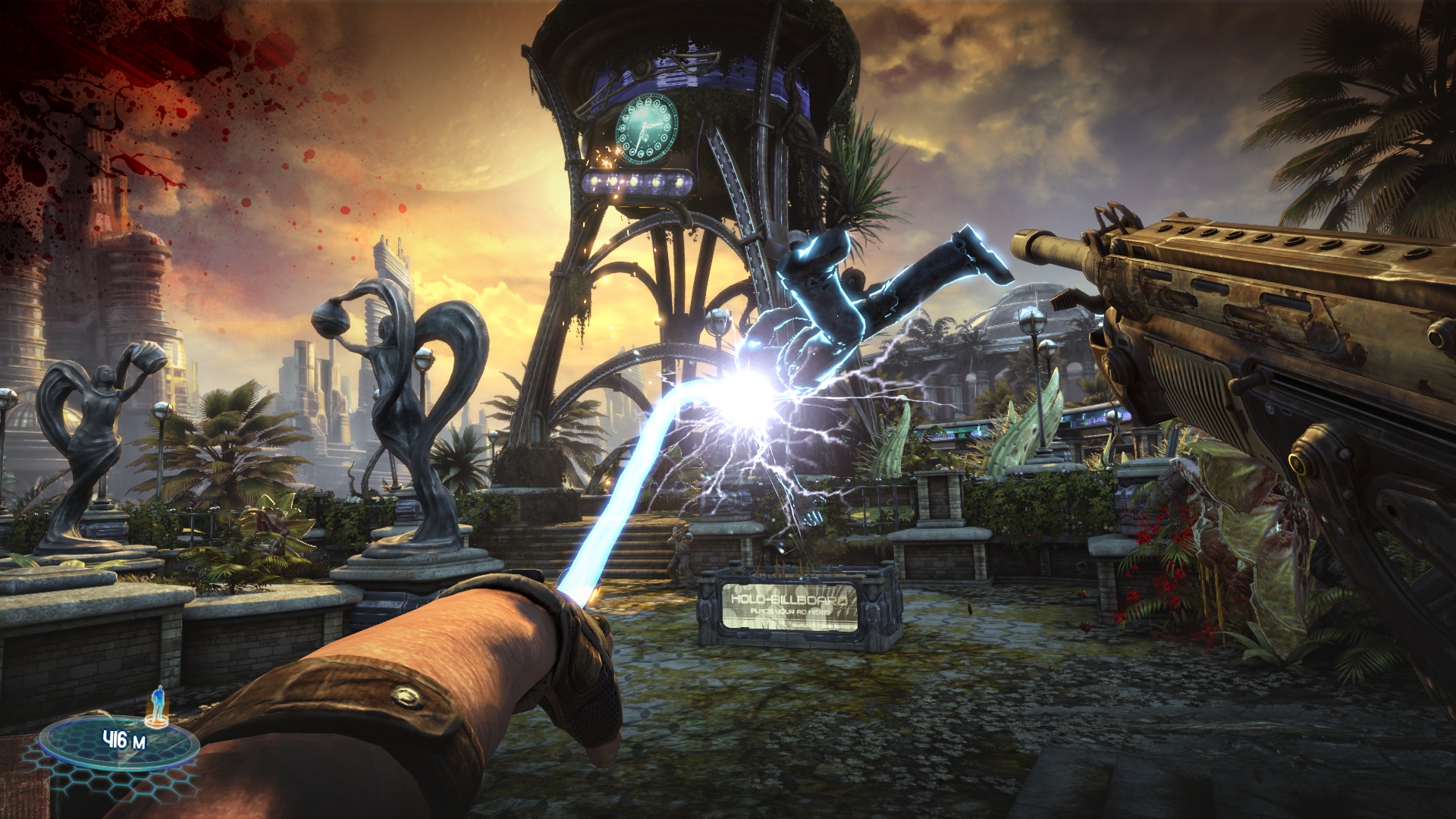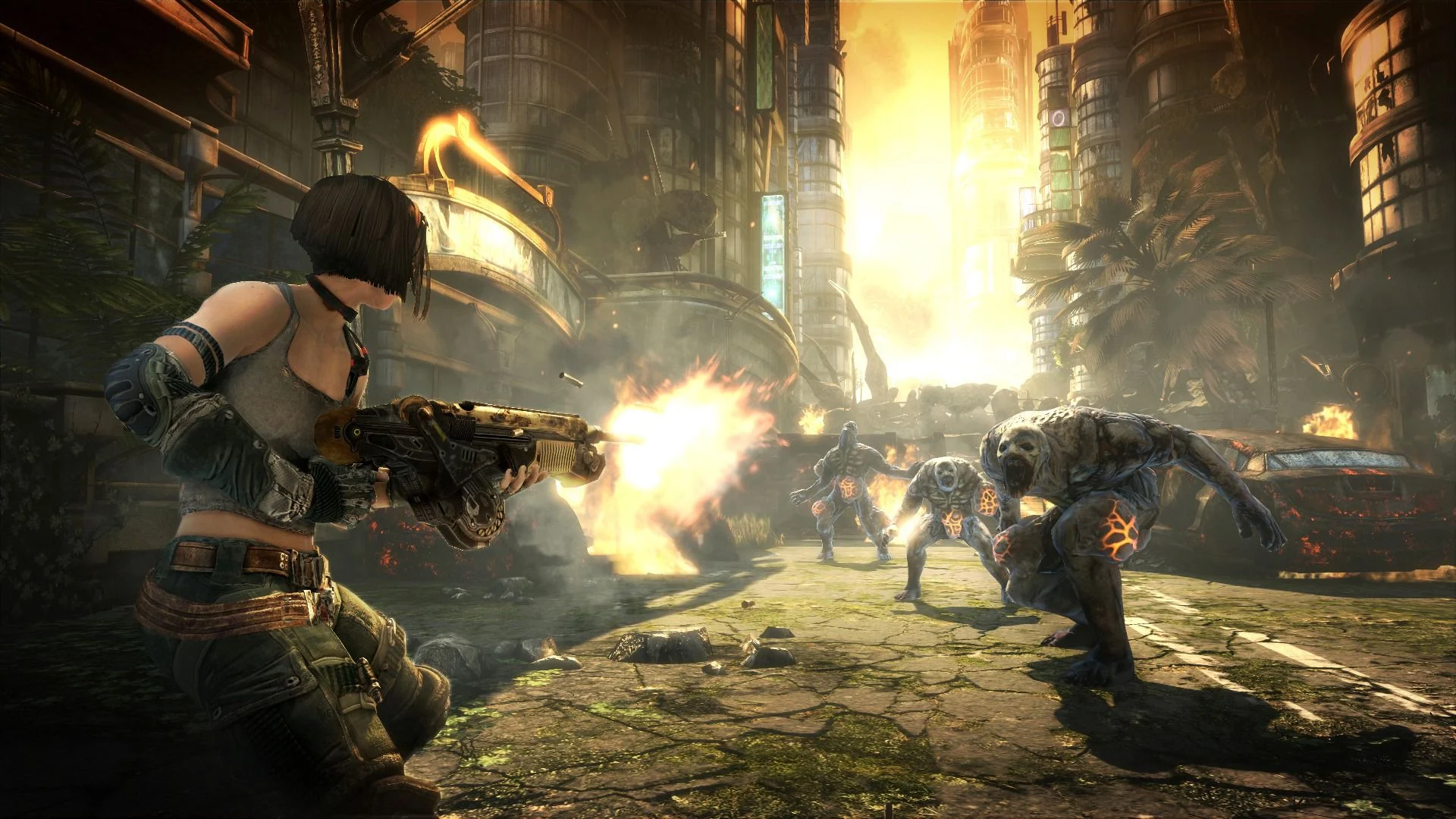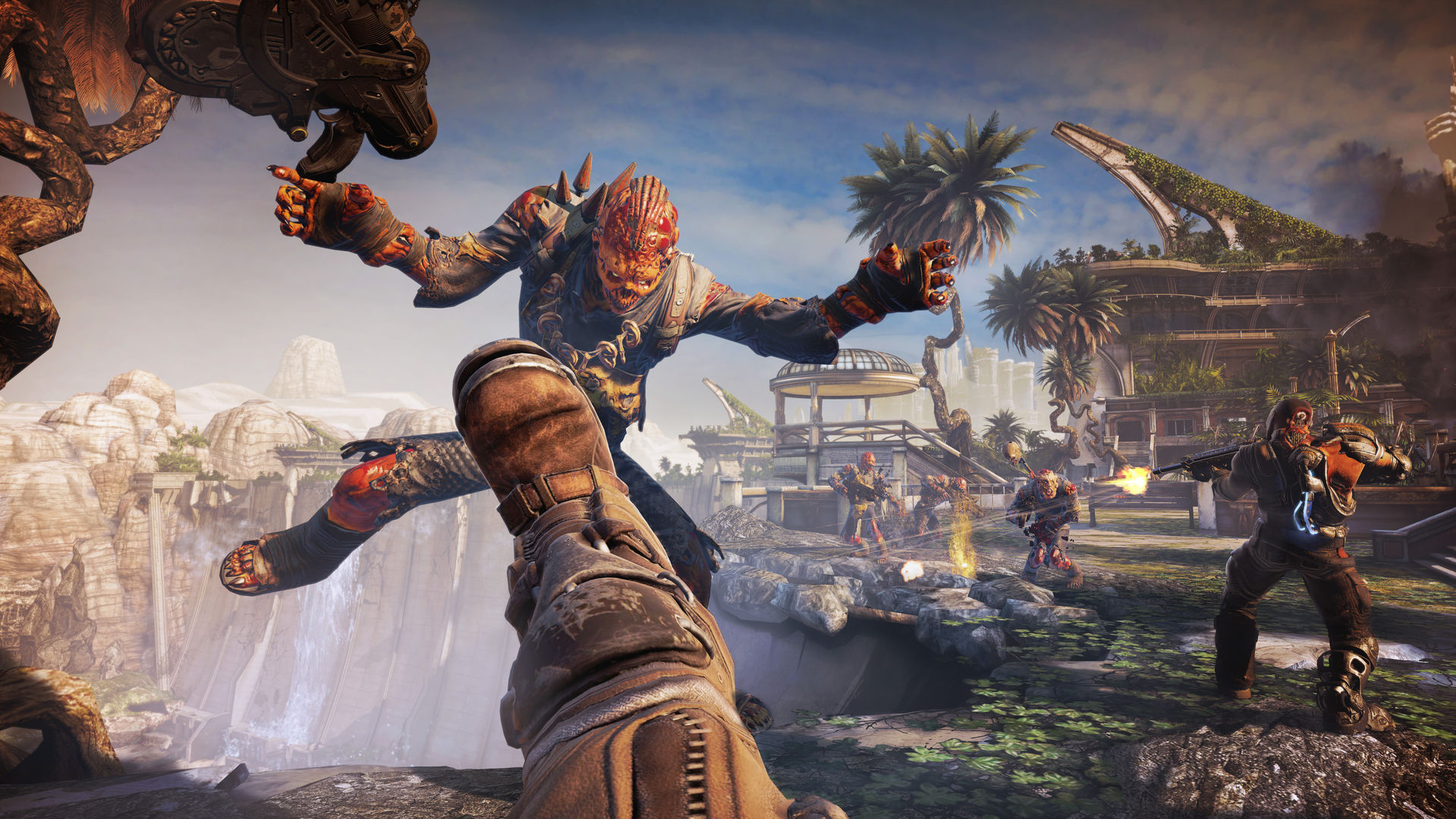There are hardly many games that demonstrate the significance of “why” in fighting games. Aside from the context of its story, People Can Fly might have something entertaining but unremarkable, but the way the elements of Bulletstorm come together produces something special and unusual.
Bulletstorm excels as a single-player shooter despite its multiplayer flaws. It has soul and personality despite its coarse humour and pompous arrogance. Today, we examine this legendary game’s development in great detail to determine what worked and what didn’t.
Rise of Bulletstorm
Bulletstorm (2011)

The notion of Bulletstorm is sufficiently unique. The tale of Grayson Hunt, an ex-confederate agent turned rogue, is presented in Bulletstorm, which is set in a distant future full of outlaws and clichés from the American Civil War. After the Confederacy, Grayson spent all his time taunting his old leader and hanging out with his equally illegal group, Dead Echo. Grayson puts his vessel on a suicide voyage and maroons himself and his team on the planet Stygia when a chance to attack openly against the Confederacy presents itself.
He must remove the inhabitants from the planet while also attempting to exact vengeance and receive the atonement he so badly seeks. The Confederate energy weapon Leash, which has an intrusive artificial intelligence, is soon acquired by Grayson.
The Leash’s AI was developed to assess fighting efficiency; it rewards combat boldness with points that can be cashed at Confederate restock pods dispersed over the world. The Leash enables Grayson to grab foes and hurl them into the sky in slow motion. You can find a number of designated death sequences that award extra credits than ordinary ones by coupling shots to particular limbs and/or specifically sensitive regions with upright and gliding blows, the Leash, and different environmental dangers.
Although the concept of customizable weaponry and abilities isn’t particularly novel or unique, Bulletstorm gives its combo structure a pleasant boost of utility and suspension of disbelief. All of Bulletstorm’s distinctive and genre-defying machine systems are taken by The Leash AI and explained in the context of its own unique universe. It’s… clever. Who would have guessed, especially considering how archaic Bulletstorm’s first-person shooting is?
Bulletstorm is impressive even though there is no cover, the foes aren’t particularly cunning, and the stages are simple runs from point A to point B. The combination concept, along with gunfire that feels reactive and beefy, with strong, intriguing weaponry, makes Bulletstorm’s gameplay successful. The well-paced narrative of Bulletstorm is also full of great spectacles, from the multiple appearances of enormous monsters to whole cities collapsing. Bulletstorm does a great job at handling magnitude and size.
The contrast between both – “the things that are big” and “humans” – never feels forced. The Stygian elegance of the current moment contributes to some of that anchoring. Stygia’s vibrant, vicious existence has overtaken the ruins of the Confederacy’s city of joy. Everything is a danger, including human savage groups, freak clans, and even more terrifying creatures. The plot and characters help to close the transaction.
Grayson regularly weighs his burning need for vengeance versus his sense of duty to the people he has left. It’s genuinely great to witness a protagonist admit his faults and work to right the cosmic balance, while other people get to experience the growth of their own arcs. Even if several plot points and twists are predictable, Bulletstorm’s conclusion is well-built.
Bulletstorm: Full Clip Edition

There is still enough of delightfully murderous pleasure to be had in Bulletstorm, even though it may not feel as daring as it once did, especially when compared to contemporary violent cinematic games like 2016’s Doom. A considerable graphics enhancement added to this remake enhances some of the game’s best classic sequences. Despite having a six-year-old campaign, Bulletstorm: Full Clip Edition feels right at home on the current platform era.
In addition to having sharp edges and precise textures, the new lighting setup has made everything noticeably brighter. This is most apparent in the darker settings of Bulletstorm, where brilliance breathes life into formerly muted tones, and in the game’s copious amounts of gore, where specific intestines can be distinguished among the otherwise shapeless insides. The improvement significantly contributed to Bulletstorm’s spectacular peaks.
Especially in 4K on PC and PS4 Pro, expansive landscapes and fast-paced escape scenarios that showed promise in 2011 now appear considerably more amazing and feel far more intense. A still entertaining, insanely over-the-top action title from the last generation, Bulletstorm: Full Clip Edition looks fantastic and makes fun of the genre while establishing its own distinctly violent, melee-heavy style of play. However, it’s nearly entirely empty of fresh material, which deters devoted followers who were looking for more than a cosmetic update.
Fall of Bulletstorm

That question doesn’t really have an instant answer, and it has been evolving over the past few years. The major reason there wasn’t a successor to Bulletstorm in the months and years just after its release was rather straightforward: the game’s critical acclaim wasn’t reflected in its net sales. The game’s sales were viewed as unsatisfactory by both developer Epic Games and publisher EA, with Epic announcing a few months after the game’s release that they had struggled to generate a profit.
Early pre-production on the intended sequel between Epic Games and People Can Fly had begun; however, after the game’s underwhelming revenues, Epic, which at the time-controlled People Can Fly, removed the company from Bulletstorm 2 and assigned staff to work on a different project. People Can Fly obviously continues to think about it and spend towards Bulletstorm, and their most recent bets with the remaster and the Switch release have come out to perform well.
Future of The Bulletstorm Franchise

Now, after mentioning all that we did previously about the decline of the franchise, do you think that implies that the firm will soon start working on a sequel? We most definitely hope for that. People Can Fly are now concentrating on the impending The Outriders, but after that is finished, ideally, they will start working on the new Bulletstorm game. Some reports suggest that the development of Bulletstorm 2 for PC is still in the works.
The re-edition was brought by the representative of the company. When they delivered a re-edition, the creators had originally decided to release it. There’s a chance that Bulletstorm 2 will be published in its entirety. The reedition was published as a practice piece before the major project. The game’s launch provided the public with a preview of what to expect from it. They examined the audience’s enthusiasm for the game as well as their primary demands.
If we must make a release date prediction, Bulletstorm won’t go on sale up until late 2023 or in the following several years.
